Selective Color Adjustment Mask
This tutorial explains how to select a color range from an image and modify the color range. The Selective Color HSL, HSL, and HSL Micro Curve tools have simple feathered color range selection built.
If the color range requires more processing than a simple feathered range such as thresholding or smoothing then the Selective Color Mask tool is used to create a color range mask. This tutorial uses both color range selection methods.
Similar steps can be used to select a color range for any stretch, contrast, deconvolution, or color adjustment filter with optional blend mode, opacity, and mask.
Step 1) Adjust Red Saturation of M27 Using Built In Feathered Color Selection of the HSL Tool
Initial image with low red saturation in the center of M27.
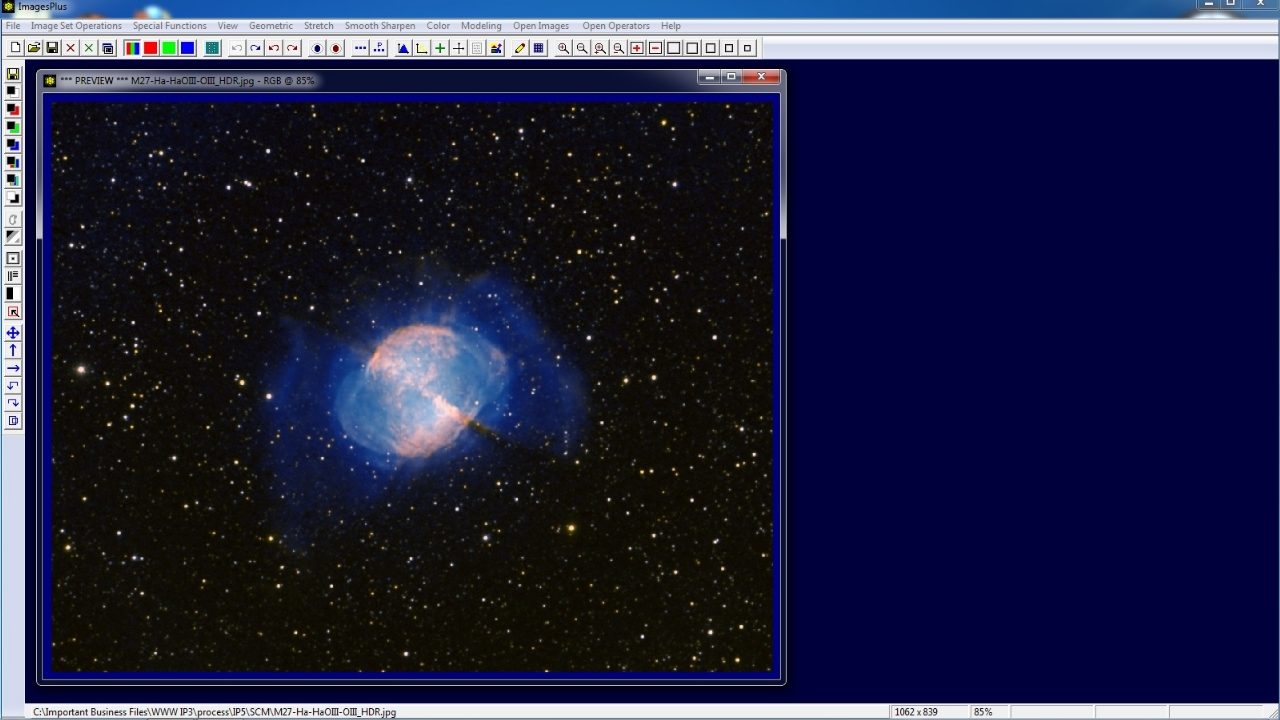 |
Open the Color | Hue-Saturation-Luminance (HSL) tool and check the Select Hue From Image box. Left-click on low saturation red near the center of M27. The left and right hue range and feather triangles are set on the HSL tool with the selected hue in the center of the range.
Move the Saturation slider on the HSL tool toward the right to increase saturation in the hue range.
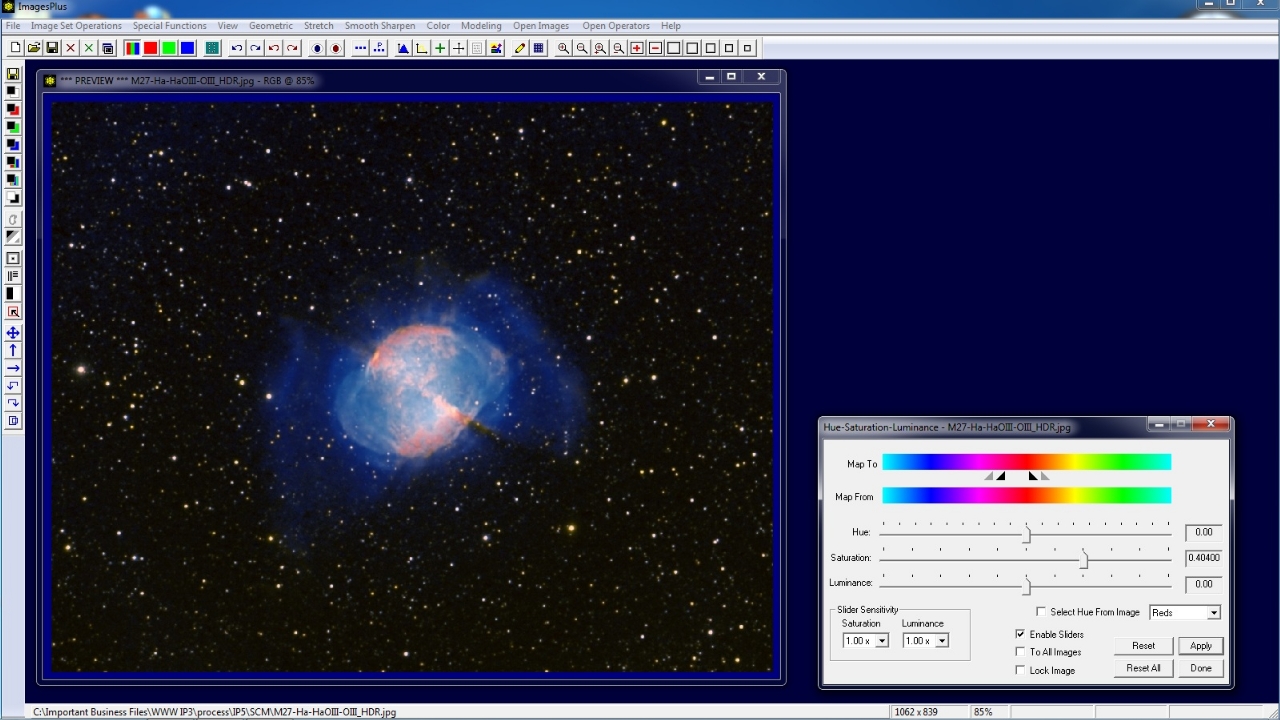 |
Left click on the hue range triangles to move or between to triangles to move as a group. Adjust the hue range and feather triangles along with the Saturation slider on HSL to fine tune the saturation increase.
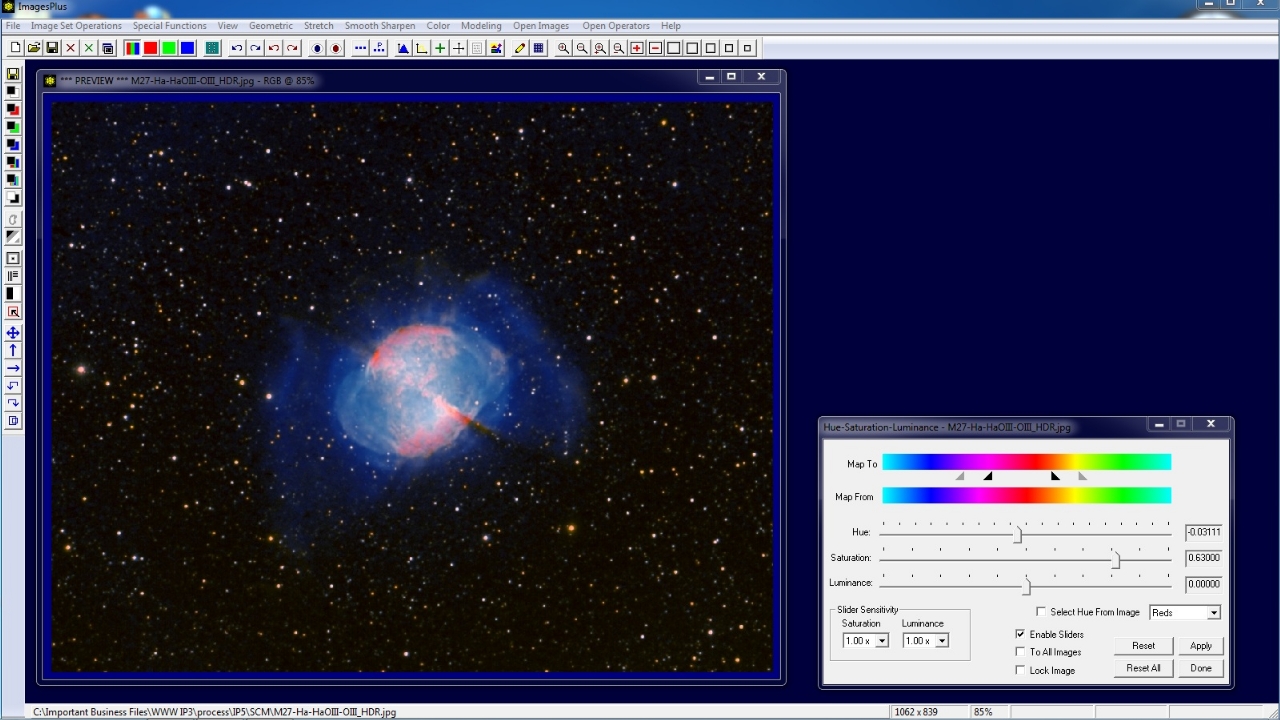 |
Step 2) Create a Selective Color Mask to Remove the Blue Background Near Top of Image
Use the Selective Color Luminance button on the left vertical toolbar to open the tool. Check the Select Hue From Image box then left click on the blue area of M27.
The left and right hue range and feather triangles are set with the selected hue in the center of the range. A grayscale luminance image of the blue selection is displayed. Adjust the hue range and feather triangles along with the Mask Level slider to select the blue area.
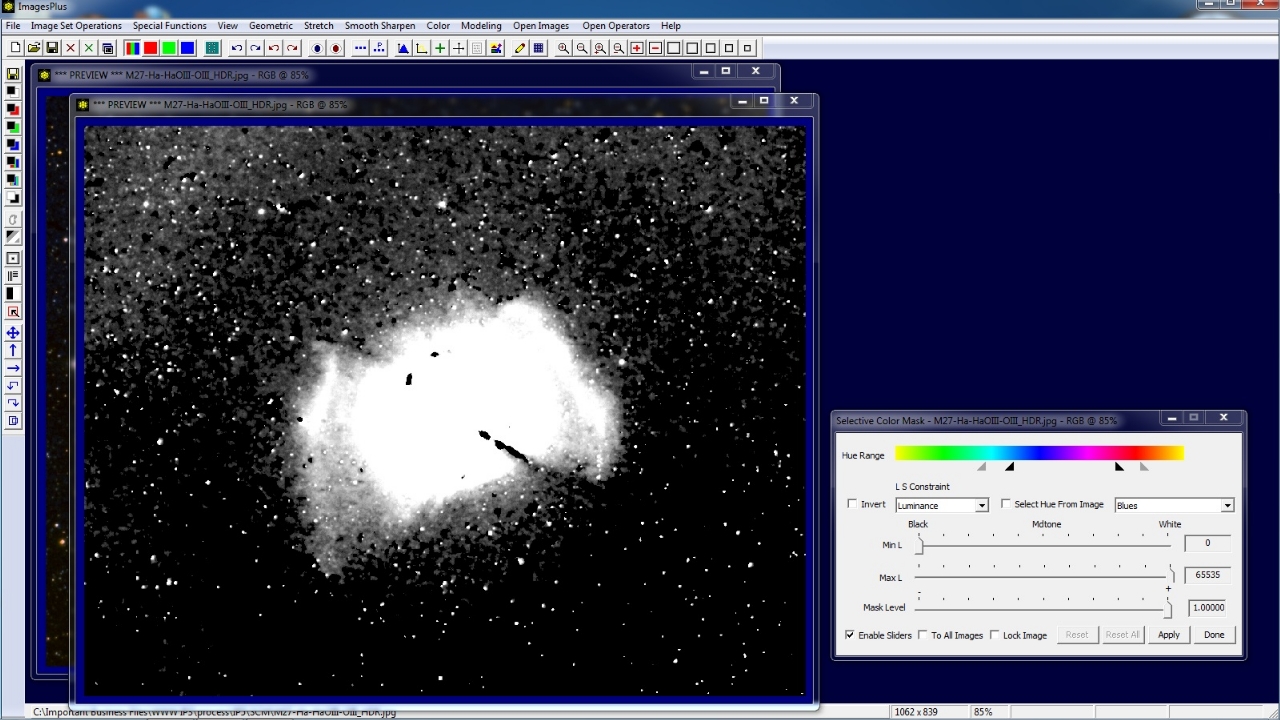 |
Open the Local Smooth, Sharpen, & Paint tool using the button on the left vertical toolbar. Select the Fill With Intensity Value option and set effect size = 25 x 25 and intensity value = 0 for black. Use the left mouse button to move the red square around the outer boundary of M27 to remove all white areas. Black mask areas conceal the filter that the mask is used with and reveal the image without the filter applied.
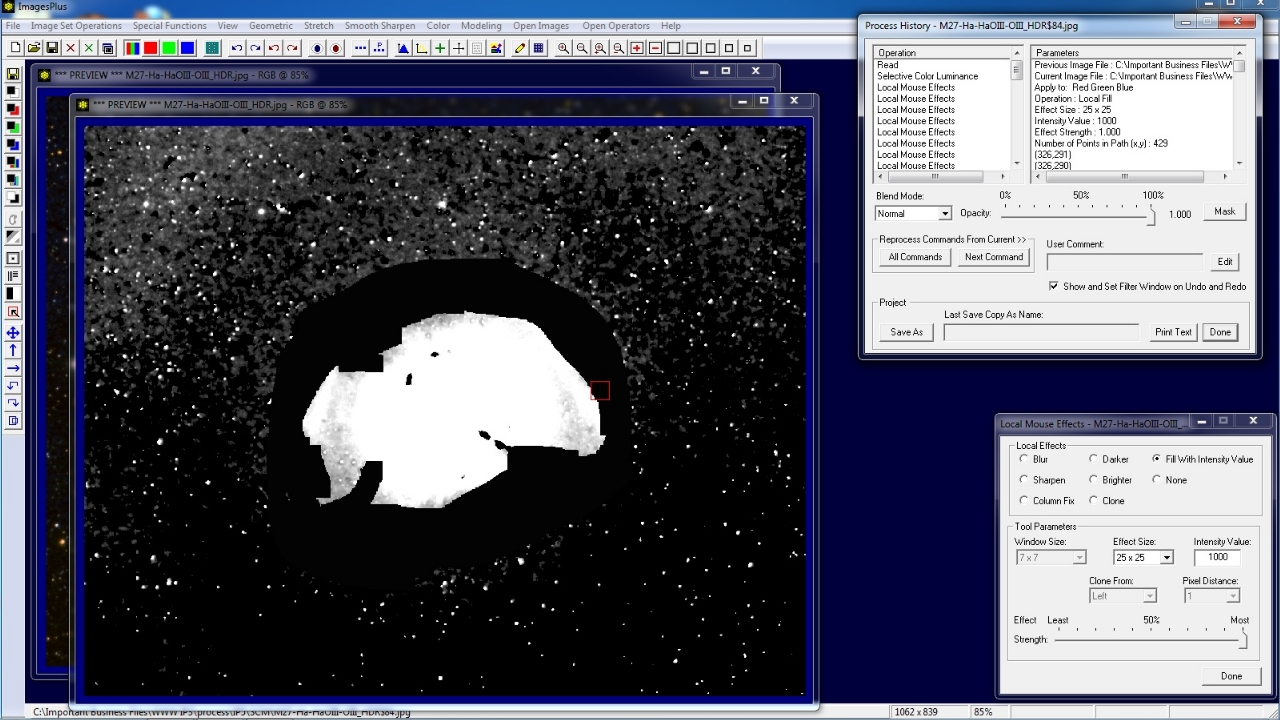 |
Set effect size = 81 x 81 and use the large red square to remove all of M27.
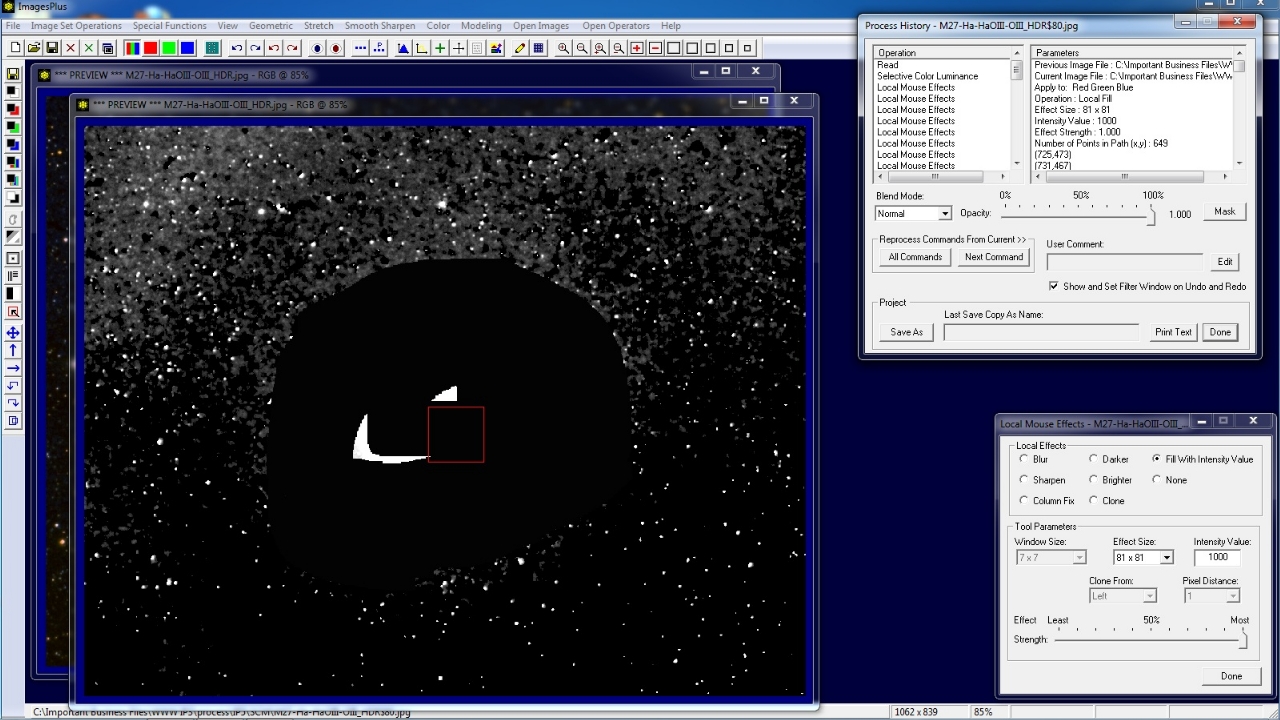 |
Blue luminance mask with M27 removed using the paint tool.
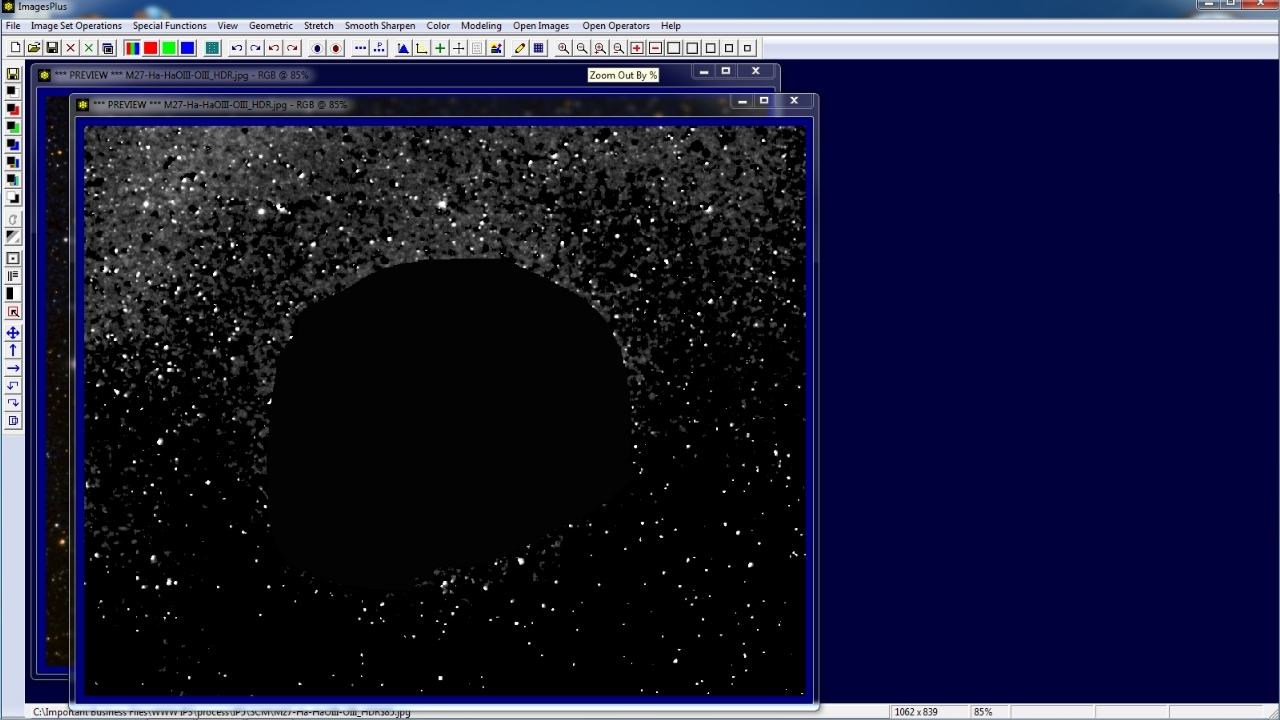 |
Open Smooth Sharp | Smoothing & Noise Reduction and apply a Gaussian blur to the blue luminance mask to improve mask blending.
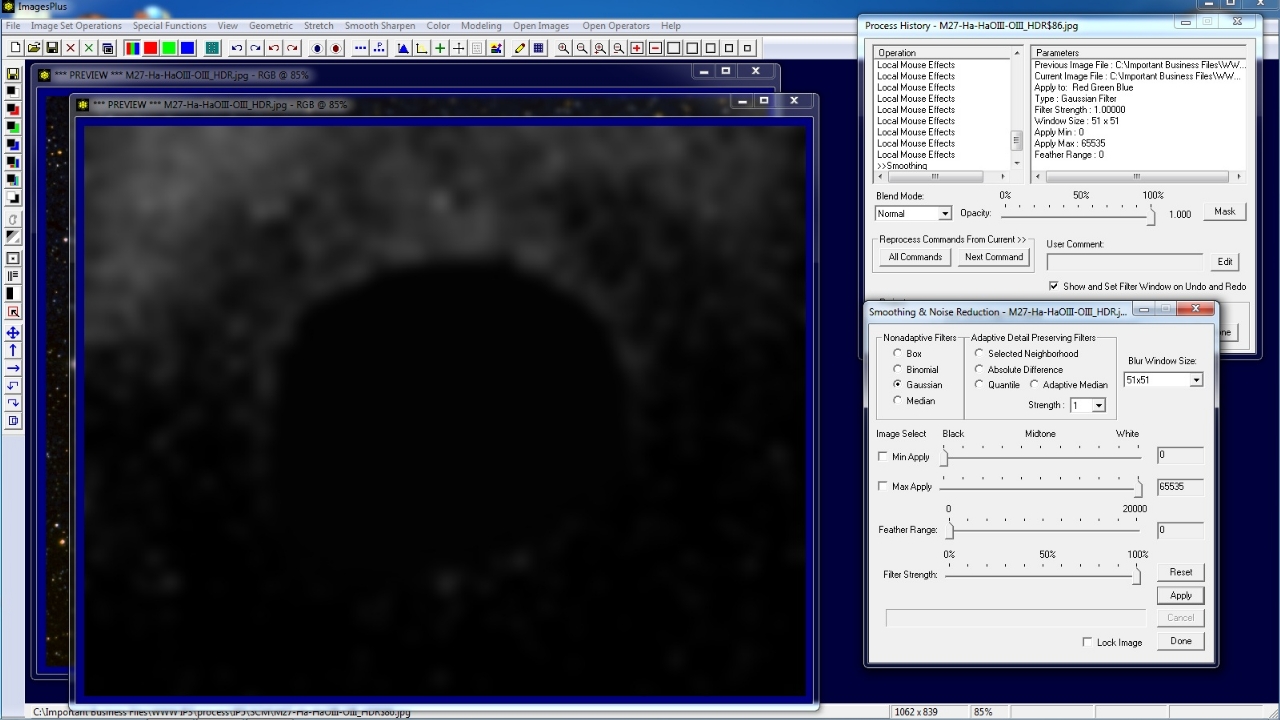 |
Use Micro Curve or Pixel Math to adjust the brightness of the blue luminance Mask.
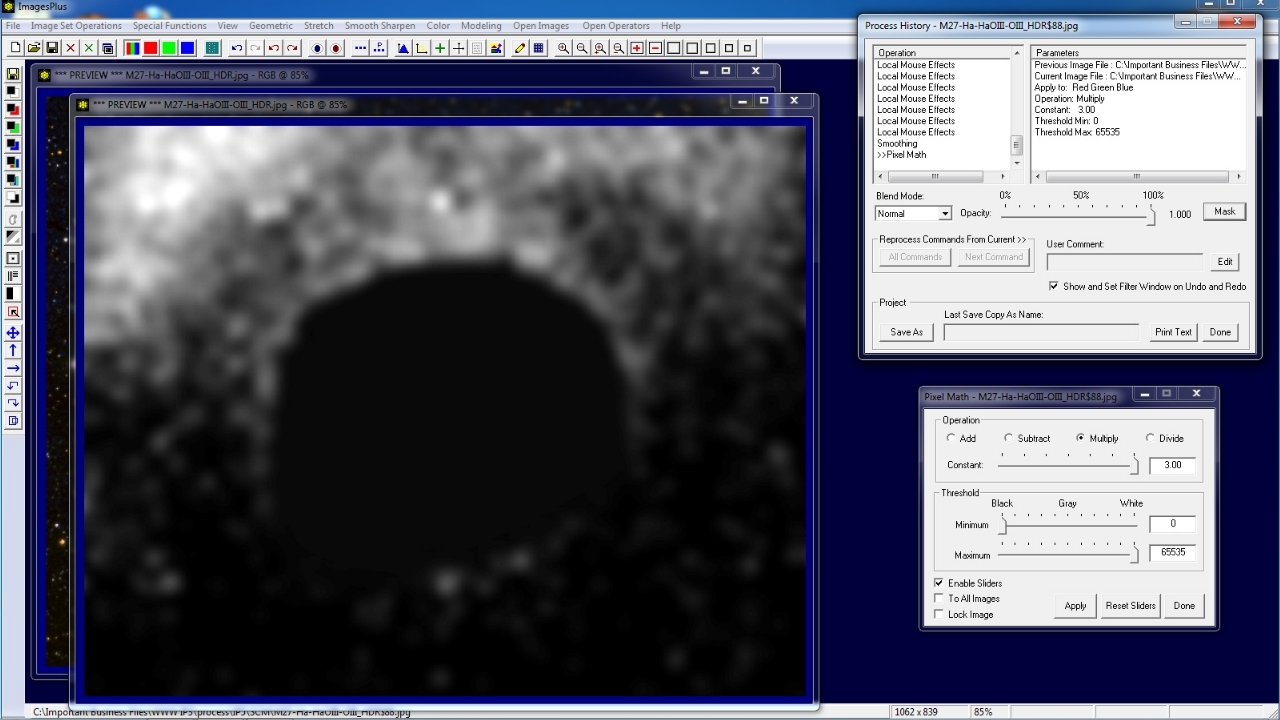 |
The blue luminance mask created with the Selective Color Mask tool is a three channel grayscale image with RGB in its top window caption bar. Use the Luminance Mask button on the left vertical toolbar to convert to a single channel luminance mask with Gray in its top window caption bar.
Close the three channel blue luminance image with RGB in its top window caption bar.
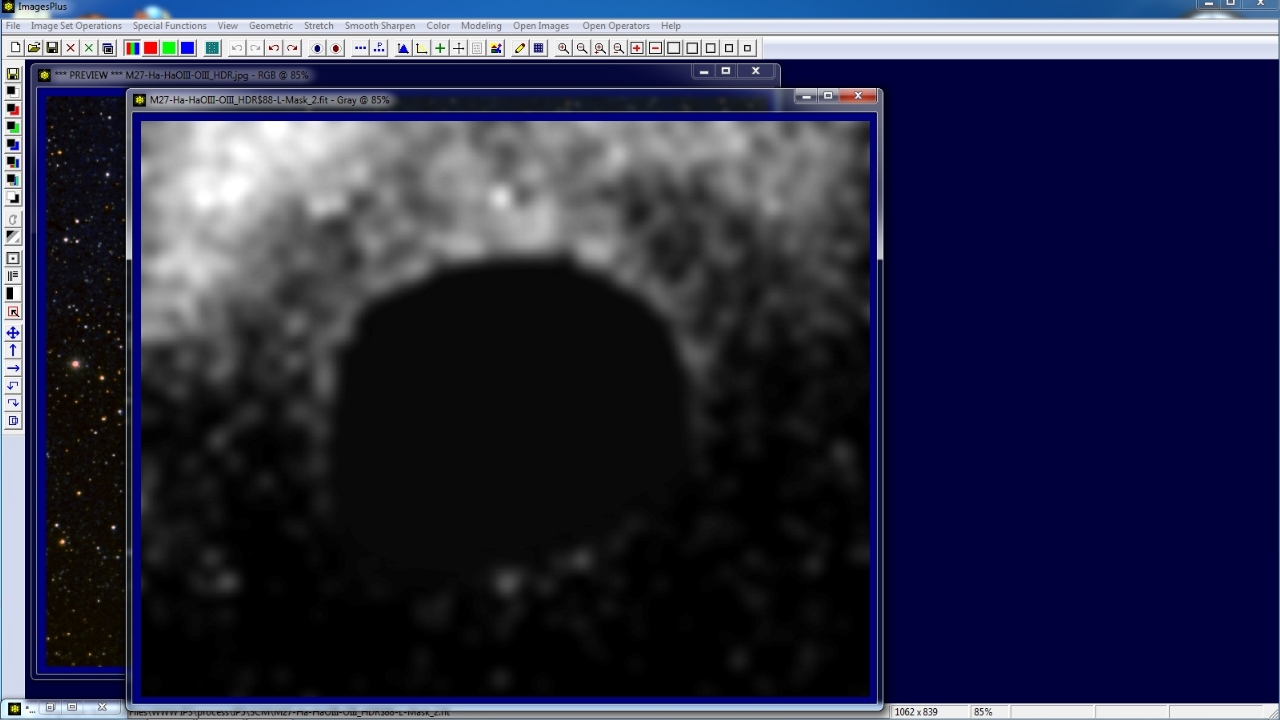 |
Use the Save As then Copy Mask toolbar button on the left vertical toolbar to name and save the blue mask. The mask is now ready to be assigned to a filter using the Process History window or Combine Image & Mosaic layer tool.
 |
Step 3) Use Blue Mask to Reduce Blue Background
Open Stretch | Micro Curve and reduce the dark blue channel. The blue background is reduced but so is blue around M27.
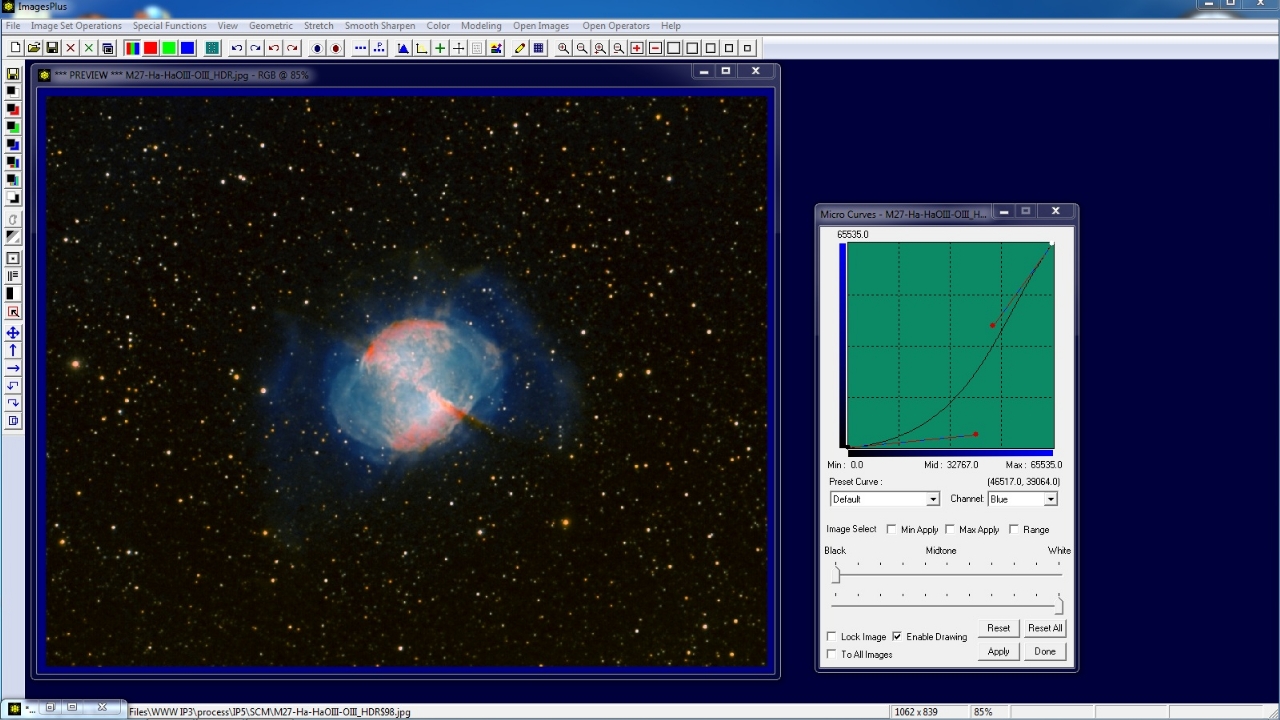 |
Open the Process Histiory window and with Micro Curve as the current command pointed to by >> in the Operation list press the Mask button.
The Mask Surface window is displayed and set to the default all white control point mask. Right click on the white mask area and select Paste. Since the last mask saved was the blue background mask it is assigned to the Micro Curve tool. Note that you can also right click on the mask area and select Copy to copy a mask to a different filter of the same image or different image.
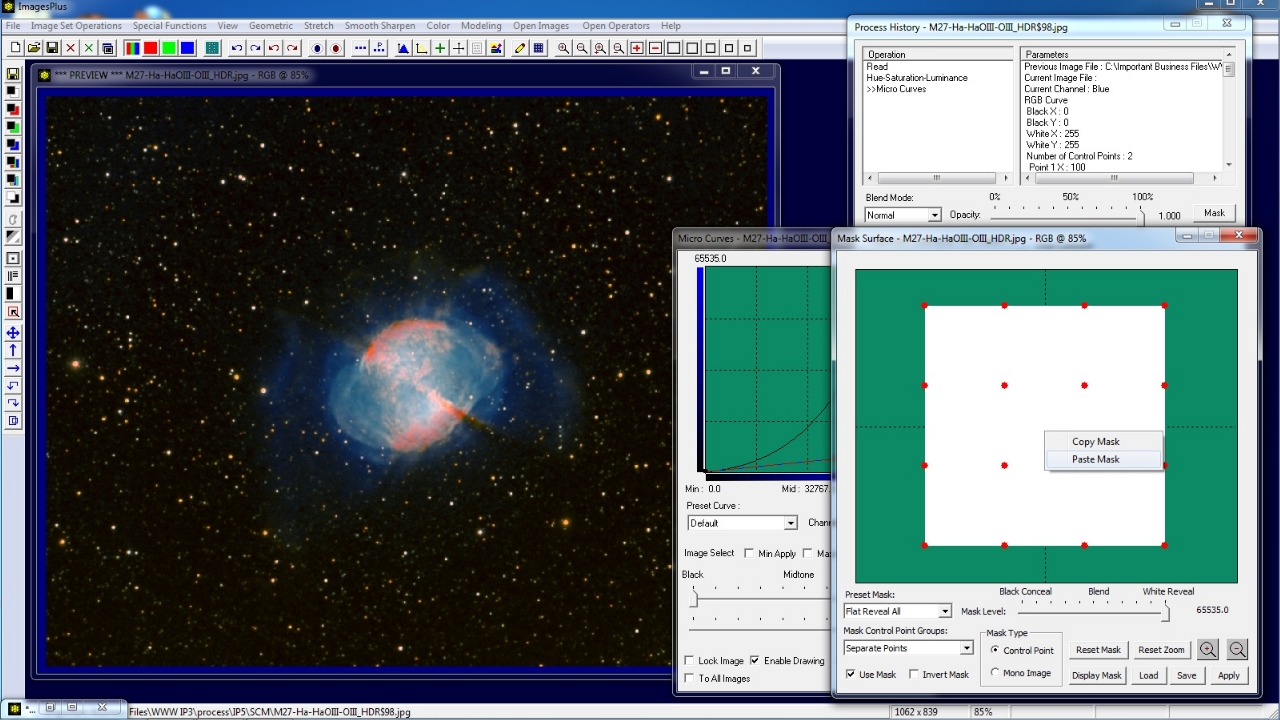 |
The blue background mask is assigned to Micro Curve and controls where blue is reduced. Brighter mask areas reduce blue more than darker mask areas. Micro Curve with the blue background mask could be applied more than once to remove all blue from the background.
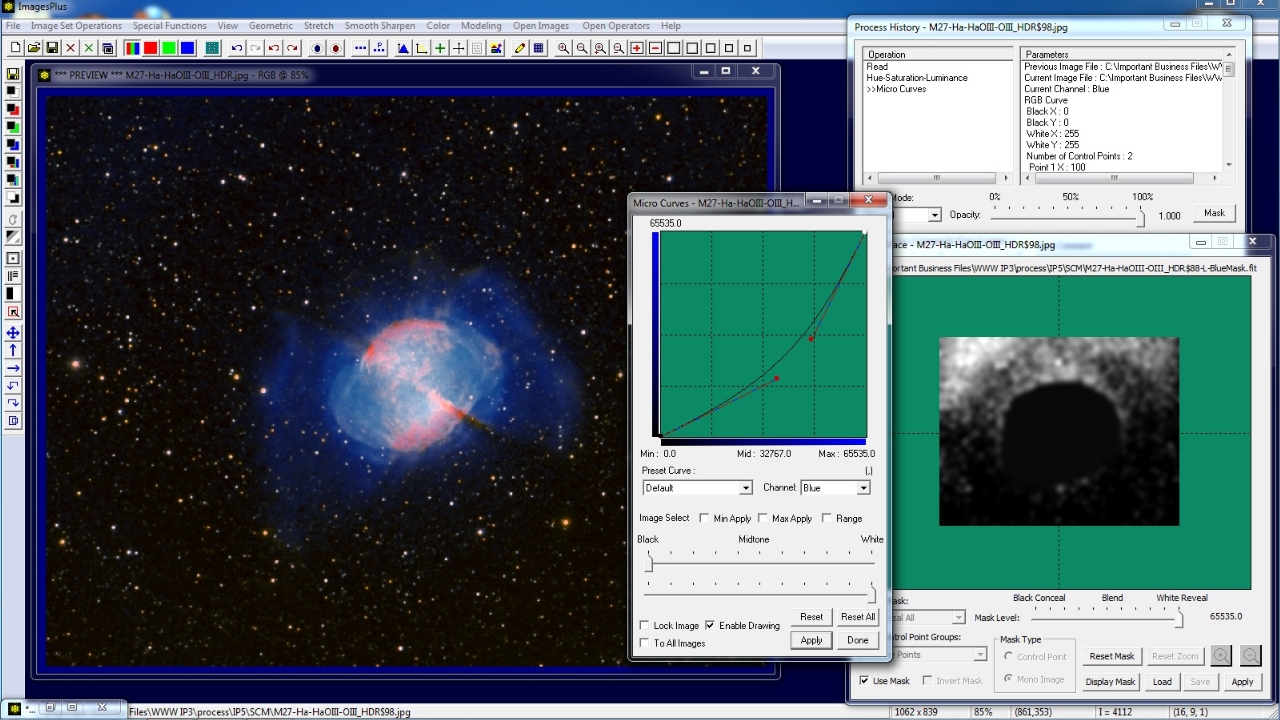 |
M27 before blue background at top of image is removed using a color mask.
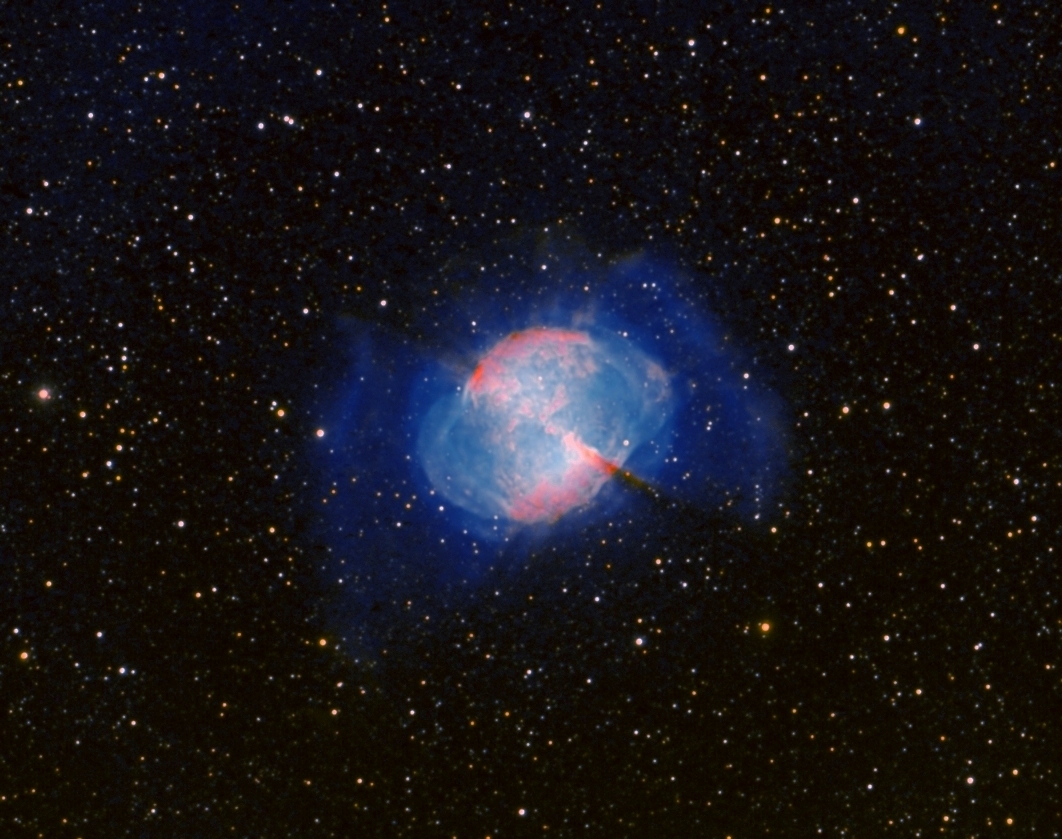 |
Micro curve applied without a mask to reduce blue background at top of image. Blue around M27 is also reduced.
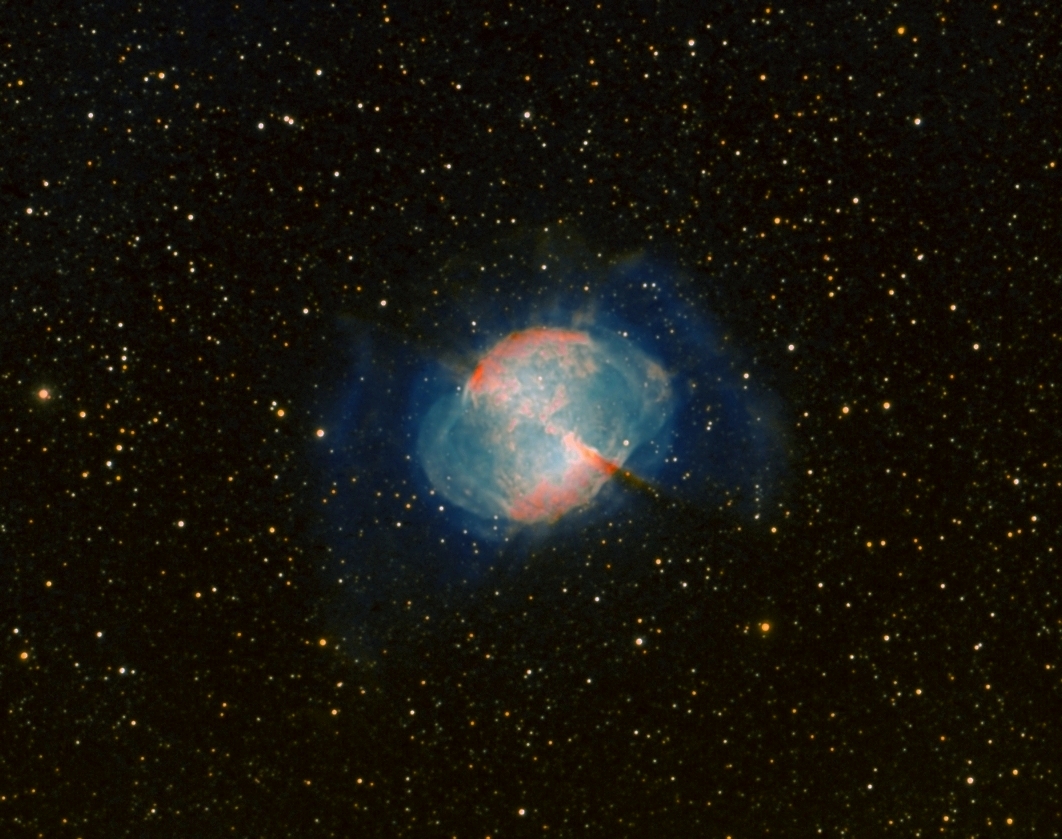 |
Micro curve applied with a blue mask to reduce only blue background at top of image. Blue around M27 is not reduced.
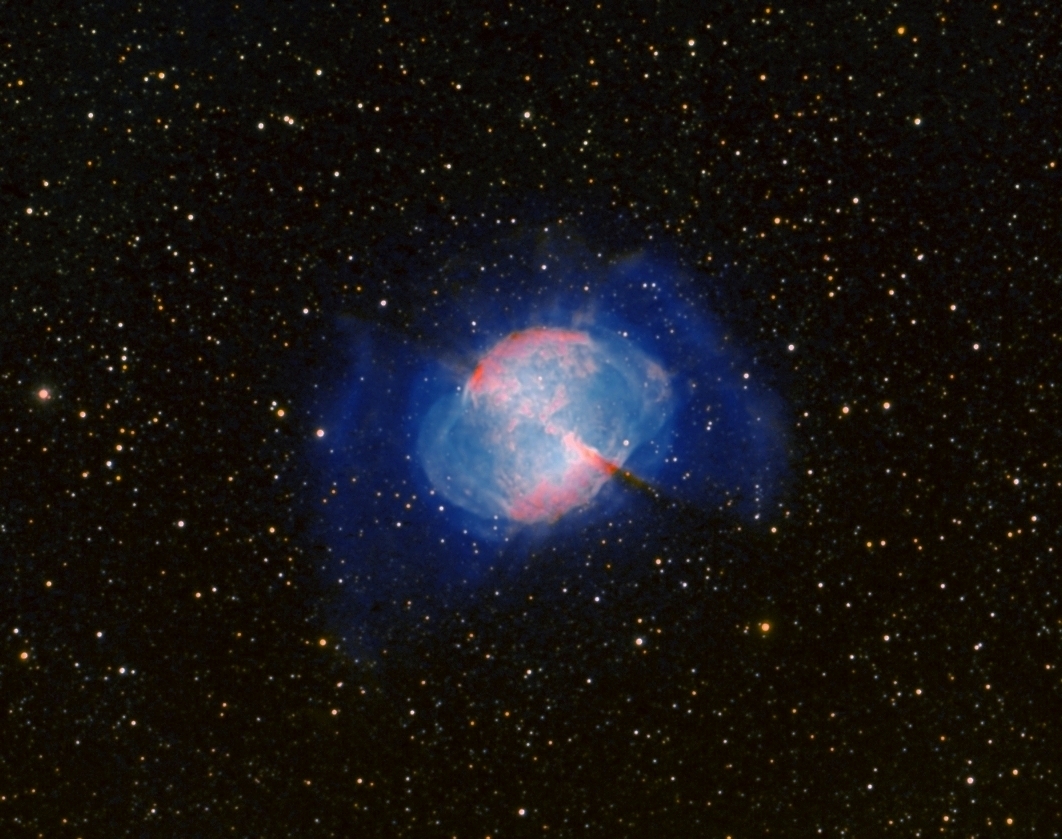 |
Copyright © 2012 MLUnsold Digital Imaging. All Rights Reserved.

















